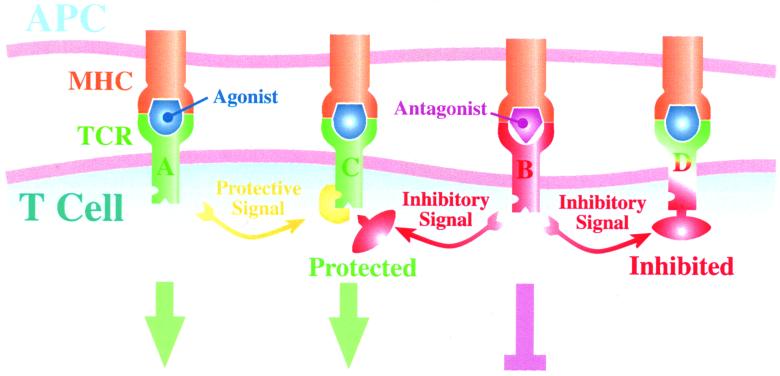Figure 1.
Mechanism of action for spreading inhibition and protection. TCR A first binds to an agonist, which results in full downstream signaling. At the same time, protective molecules (e.g., ERK-1) are recruited to its neighbors (illustrated here by TCR C). Subsequently, TCR B binds to an antagonist, which results in partial downstream signaling. This incomplete activation results in the recruitment of inhibitory molecules (e.g., SHP-1) to its neighbors (illustrated here by TCRs C and D). TCR C is protected by ERK-1; thus SHP-1 fails to dock and has no effect, whereas TCR D is inhibited. Finally, both TCRs C and D bind to an agonist. This interaction results in full downstream signaling for TCR C, which is protected, but there is no downstream signal generated by TCR D, which is inhibited.

